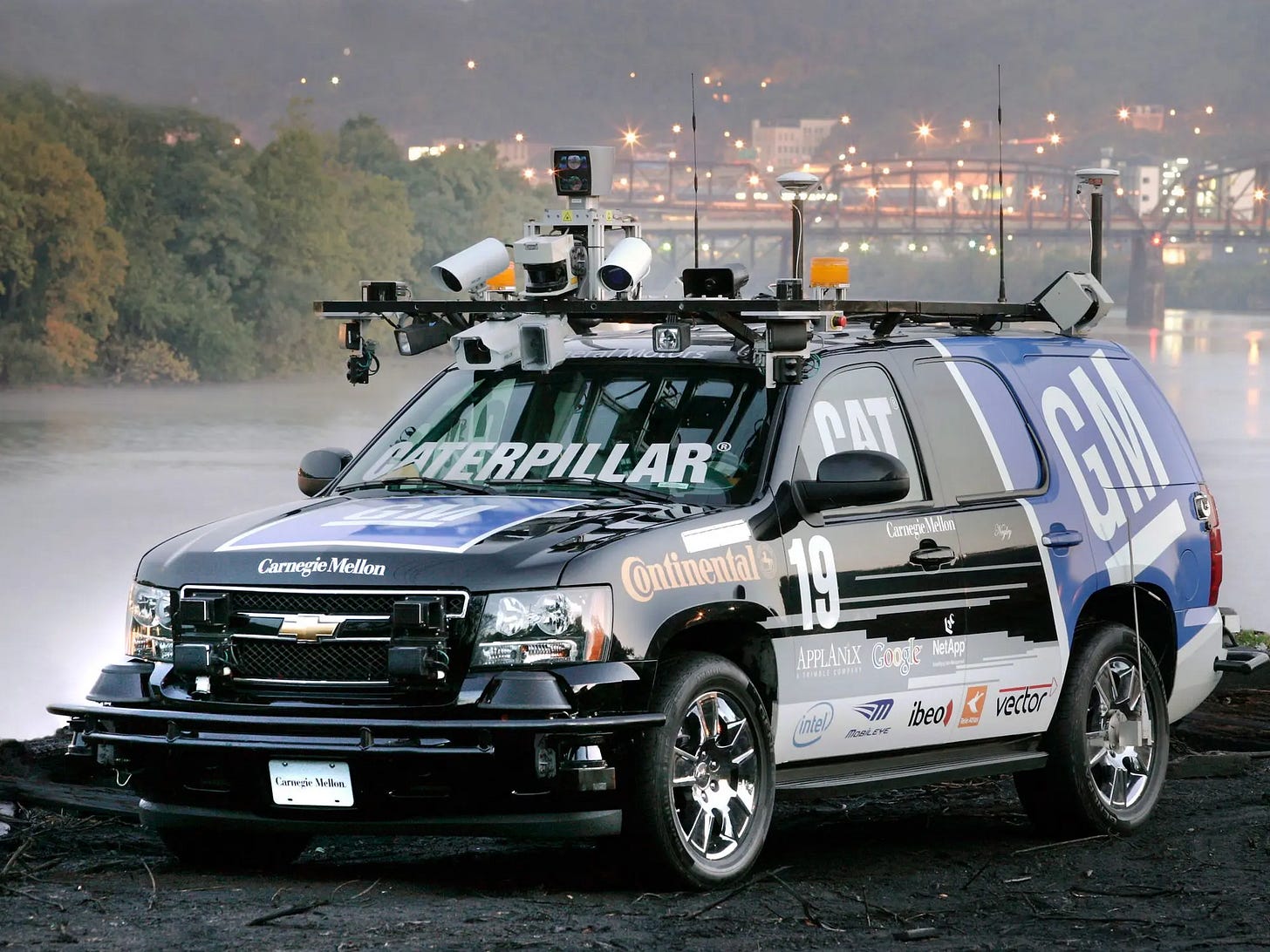The Origin Story of LiDAR Technology that Drove the Self-Driving Revolution
Long before iPhones and Teslas, LiDAR came out of a dusty desert race where failure sparked a revolution.
LiDAR wasn't born in Silicon Valley
It came out of a desert race
Most people think of Velodyne or self-driving cars when they hear “LiDAR.” But the real spark came from a strange government contest where robot cars stumbled through sand, got stuck on rocks, and not a single team even finished the course. That was the DARPA Grand Challenge of 2004, and it accidentally gave us one of the most important sensors in modern robotics.
What the heck is LiDAR, really?
At its core, LiDAR is just a stopwatch for light. A laser fires out, bounces off an object, and returns to the sensor. The system measures the time of flight—on the order of nanoseconds—to calculate distance. Stitch millions of these points together and you get a reliable 3D map of the world.
That reliability is what made it special. Cameras are cheap and good at recognition, but they struggle with depth and lighting. LiDAR doesn’t care if it’s day, night, glare, or shadow—it just measures distance. The problem was cost. Until the early 2000s, LiDAR was mostly locked up in expensive military gear.
Then came DARPA.
The desert race that changed everything
In 2004, DARPA put out a wild challenge: build a robot that can drive itself 150 miles through the Mojave Desert. No human driver. No remote control. Just sensors, code, and hope.
Several teams used SICK laser scanners, which were basically 2D slices of the world. Helpful, but not enough for reliable autonomy in unstructured terrain.
Enter David Hall. Founder of Velodyne—at the time, just an audio equipment company—Hall saw the limitation of 2D scanning and decided to go bigger. By the time the 2005 Grand Challenge rolled around, his team showed up with a new invention: a spinning, multi-laser array that could scan in full 3D, 360 degrees around the vehicle.
It didn’t win the race, but it stole the show. Suddenly, robots weren’t looking at flat slices anymore. They were seeing the world like bats with echolocation—only in rich, high-resolution vision.
Two years later at the 2007 DARPA Urban Challenge, almost every serious contender had one of these Velodyne rigs bolted on top. The desert hack had become the industry standard.

From desert hack to global industry
That Velodyne sensor turned into a business. Alumni from the DARPA challenges spun out to form or join the self-driving startups we know today. LiDAR went from niche military hardware and clunky 2D scanners to a cornerstone of autonomous vehicles, drones, mapping, and even your iPhone.
The lesson is simple. Breakthroughs in robotics don’t always come from grand research labs with perfect plans. Sometimes they come from failures, from tinkering in the weeds, from bolting a crazy idea onto a dusty desert truck and seeing what happens.
That’s where the real sparks fly.
Help Shape What Comes Next
I’m putting together the next phase of Build-Robotz, and I’d love your input.
To make sure I’m building resources that actually help you, I’ve put together a 3-question survey. It will take less than 2 minutes.
As a thank-you, I’ll pick one person at random from the responses and send them a hard copy of a newly released book that sold a few million copies in its first week. It’s worth about $30. If you’re chosen, all you’ll need to cover is the shipping.
The survey will close on Friday at 6 PM ET.




